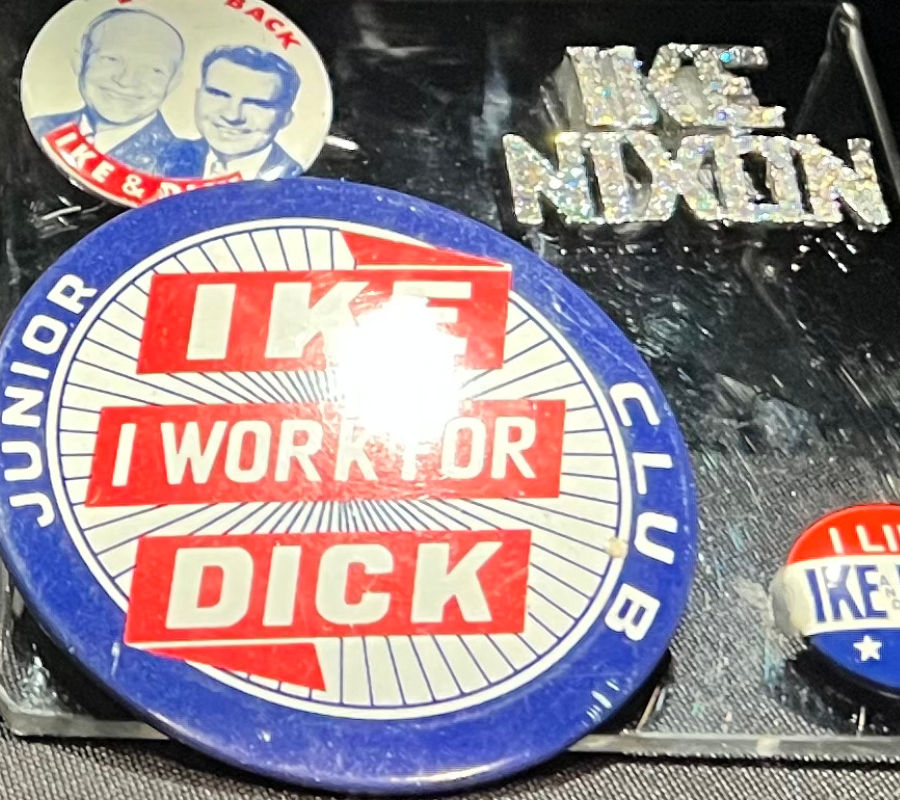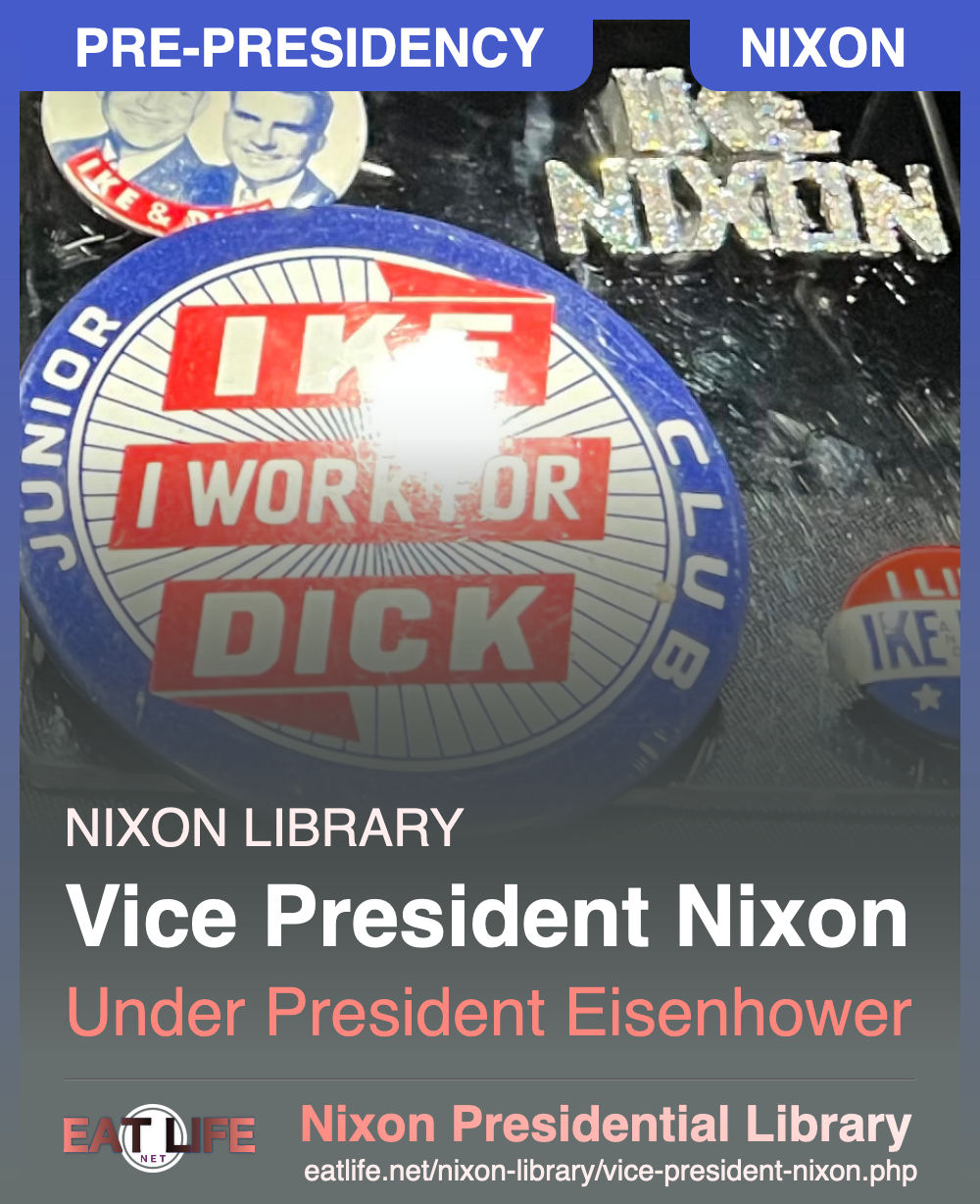Richard Nixon was the Vice President under President Dwight D. Eisenhower.
- He served for 8 years from 1953 to 1961
Nixon is chosen as Eisenhower's running mate.
- When General Dwight D. Eisenhower was nominated as the Republican Presidential candidate in 1952, Senator Richard Nixon was tapped to round out the ticket.
- Nixon's youth, his West Coast base, and the nationwide recognition he had earned as a result of the Hiss case made him a valuable addition
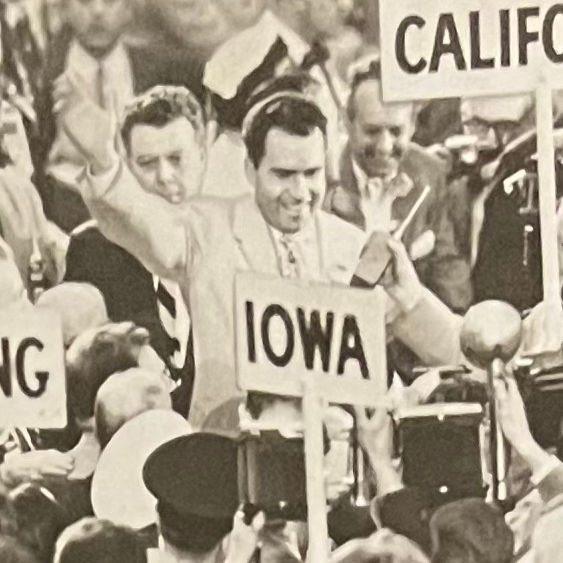
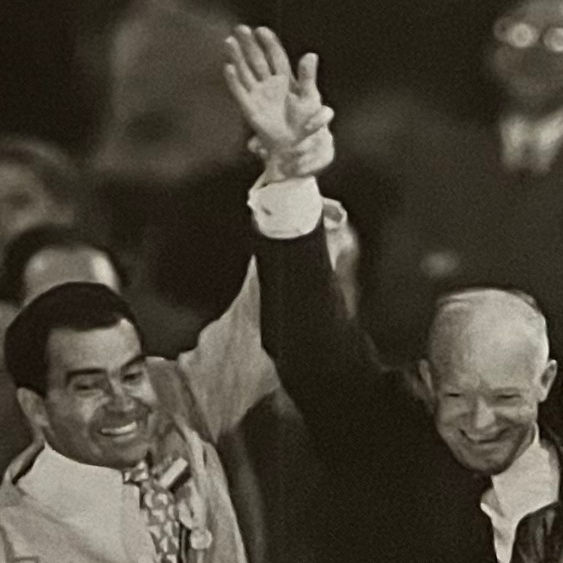
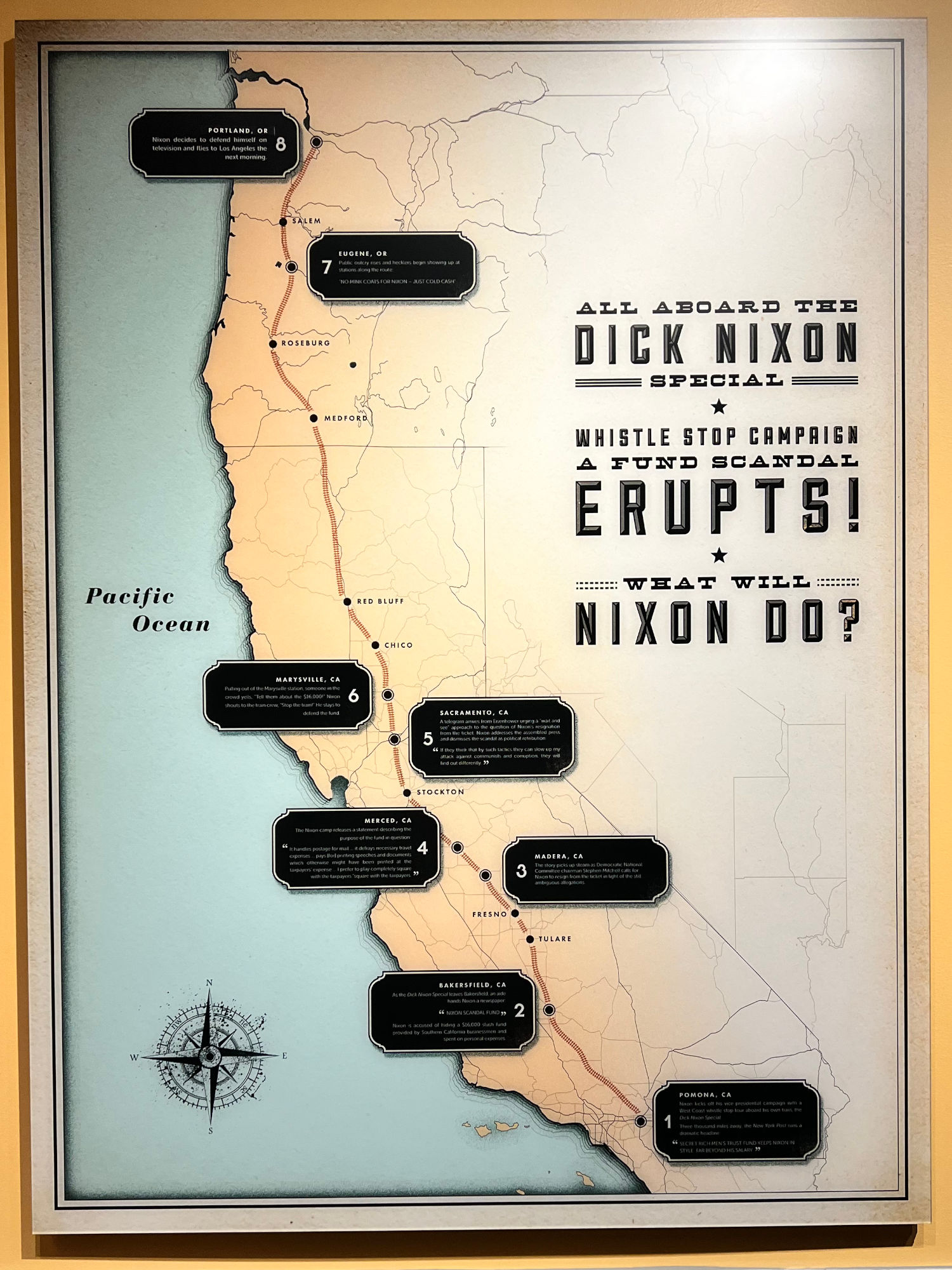
- Pomona, CA
Nixon kicks off his vice presidential campaign with a West Coast whistle stop tour aboard his own train, the Dick Nixon Special.
Three thousand miles away the New York Post runs a dramatic headline: "Secret Rich Men's Trust Fund Keeps Nixon in Style Far Beyond his Salary" - Bakersfield, CA
As the Dick Nixon Special leaves Bakersfield, an aide hand Nixon a newspaper:
NIXON SCANDAL FUND
Nixon is accused of hiding a $16,000 slush fund provided by Southern California businessmen and spent on personal expenses. - Madera, CA
The story picks up stam as Democratic National Committee chairman Stephen Mitchell calls for Nixon to resign from the ticket in light of the still ambiguous allegations. - Merced, CA
The Nixon camp releases a statement describing the purpose of the fund in question:
It handles postage for mail ... it defrays necessary travel expenses ... pays for printing speeches and documents which otherwise might have been printed at the taxpayers' expense ... I prefer to play completely square with the taxpayers. "Square with the taxpayers." - Sacramento, CA
A telegram arrives from Eisenhower urging a wait and see approach to the question of Nixon's resignation from the ticket. Nixon addresses the assembled press and dismisses the scandal as political retribution.
"If they think that by such tacktics they can slow up my attack against communists and corruption, they will find out differently." - Marysville, CA
Pulling out of the Marysville station, someone in the crowd yells, "Tell them about the $16,000!" Nixon shouts to the train crew, "Stop the train!" He stays to defend the fund. - Eugene, OR
Public outcry rises and hecklers begin showing up at statins along the route. "No mink coats for Nixon - just cold cash" - Portland, OR
Nixon decides to defend himself on television and flies to Los Angeles the next Morning.
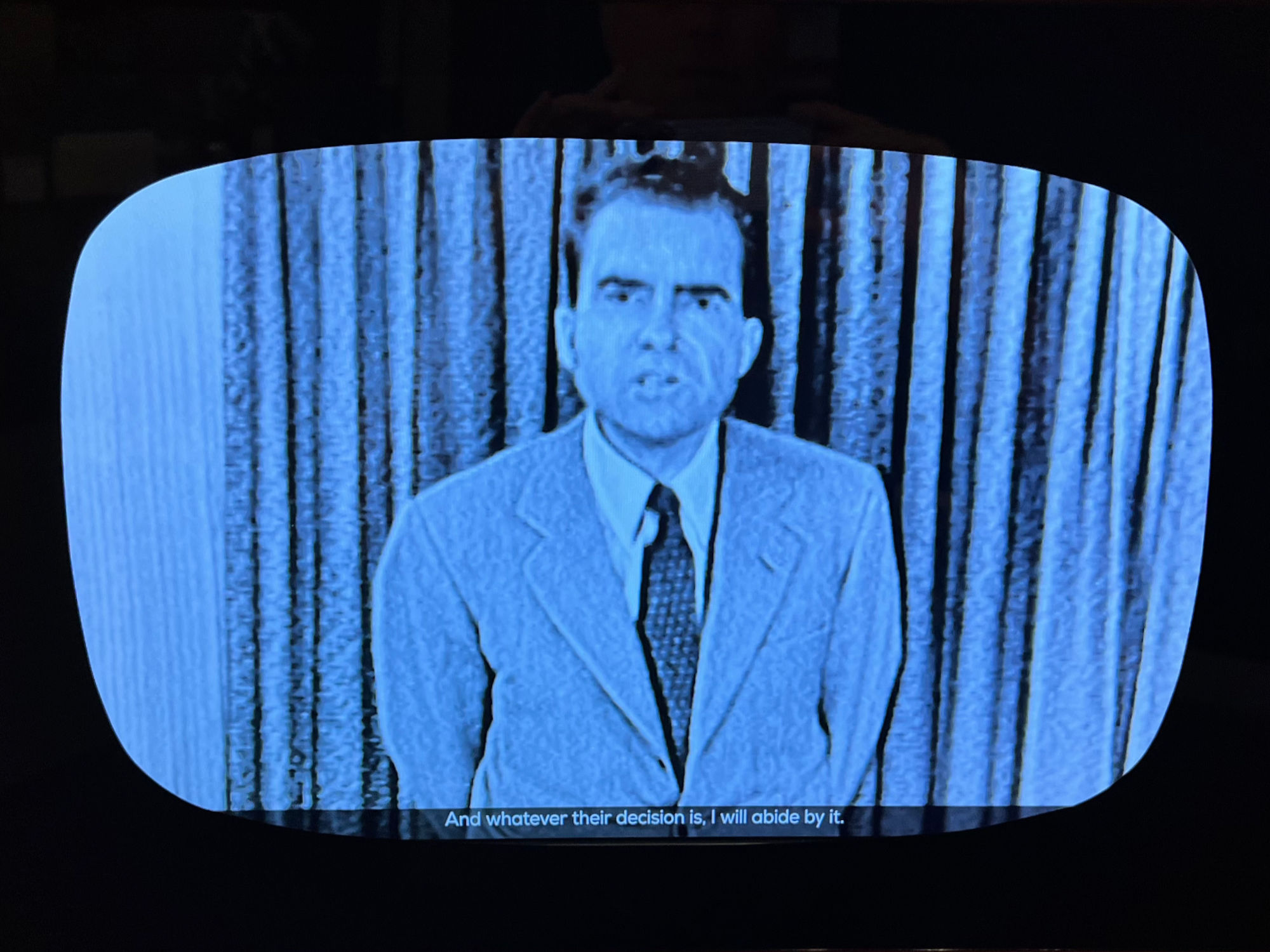
Nixon's televised defense against the accusations of illegal gifts on September 23, 1952, began with an exhaustive enumeration of the Nixon family's finances. And it ended with a dramatic call to action, asking viewers to send a message to the Republican National Committee about whether he should stay on the ticket.
- The responses were overwhelming - millions of calls and telegrams reached the RNC, and newspaper editorials across the country were resolutely in favor of Nixon. Summoned to meet Eisenhower in West Virginia the next day, the general met Nixon at the airport with the words. "You're my boy!"
Perhaps the most memorable moment of the speech, however, came from Nixon's mention of one gift, a little cocker spanel that his daughter had named Checkers. "The kids ... love the dog and I just want to say this right now, that regardless of what they say about it, we're gonna keep it."

Nixon plays with Checkers, the family pet whose name was immortalized in Nixon's speech about an alleged slush fund.

Wire and write the Republican National Committee whether you think I should stay on or whether I should get off the ticket. And whatever their decision, I will abide by it.
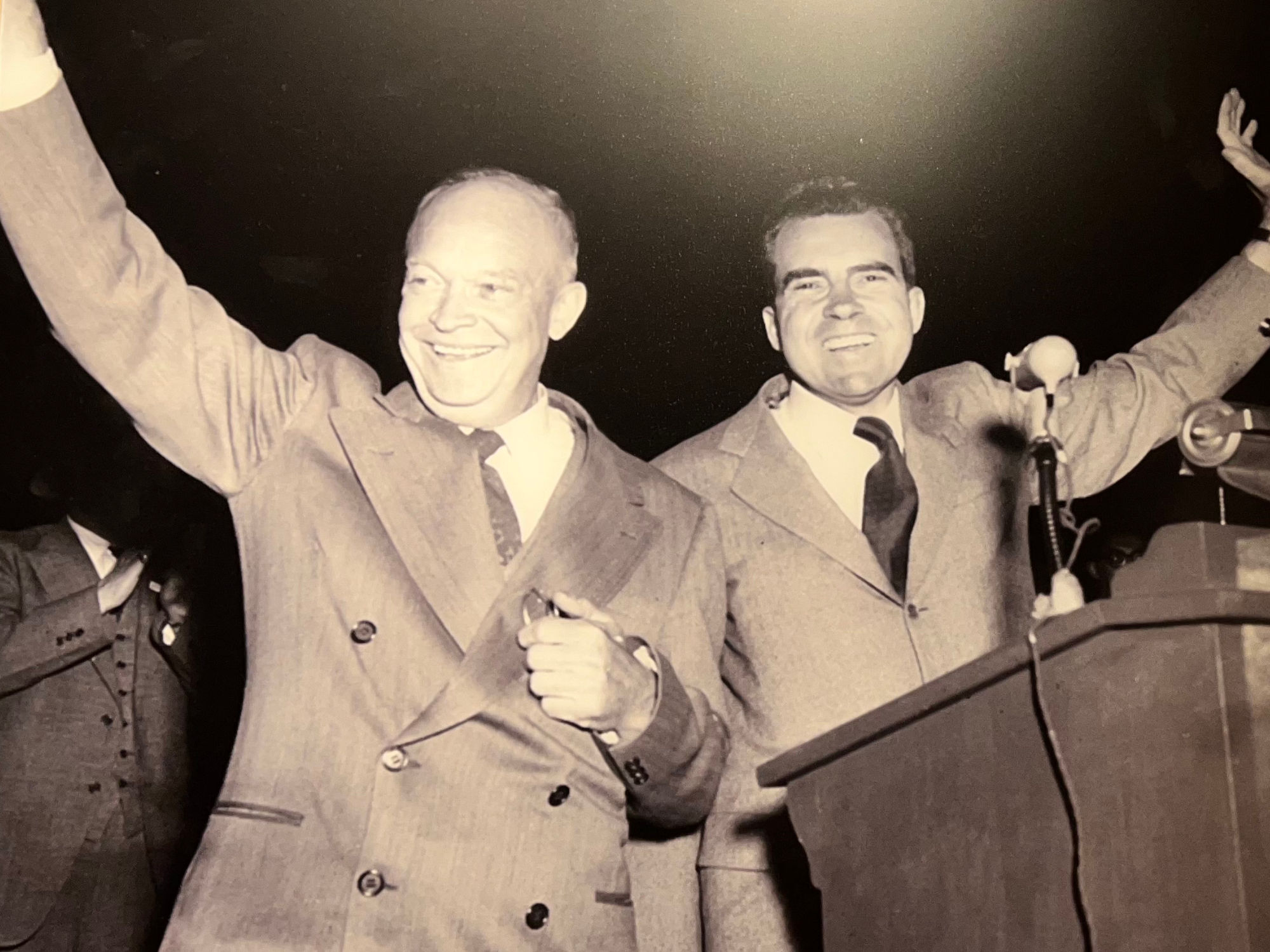
Meeting at Wheeling, WV, following the "Checkers" speech, GOP standard bearer Eisenhower says he has full faith in his running mate.
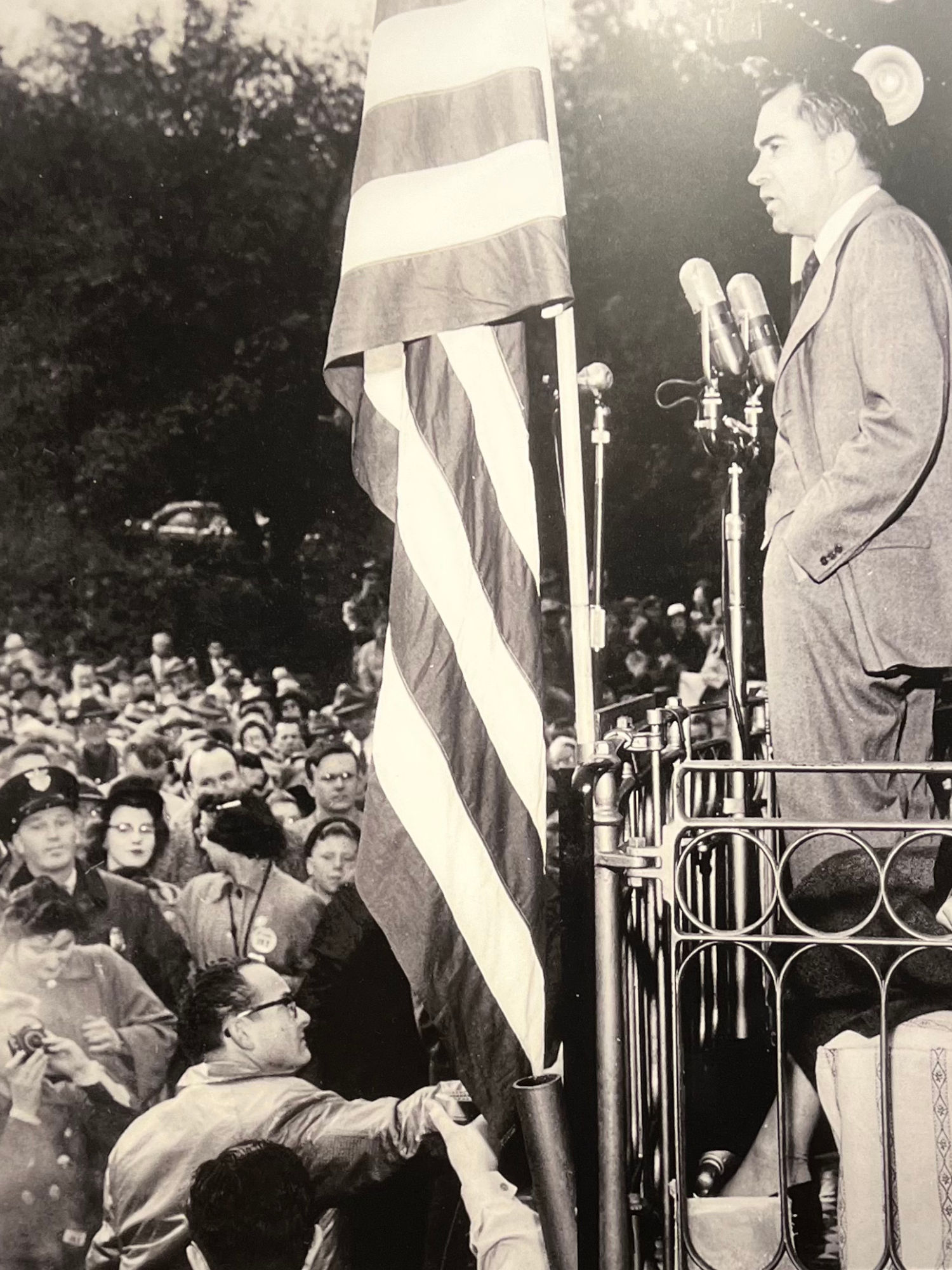
Vice Presidential candidate Nixon makes a campaign whistle stop in Ann Arbor, MI
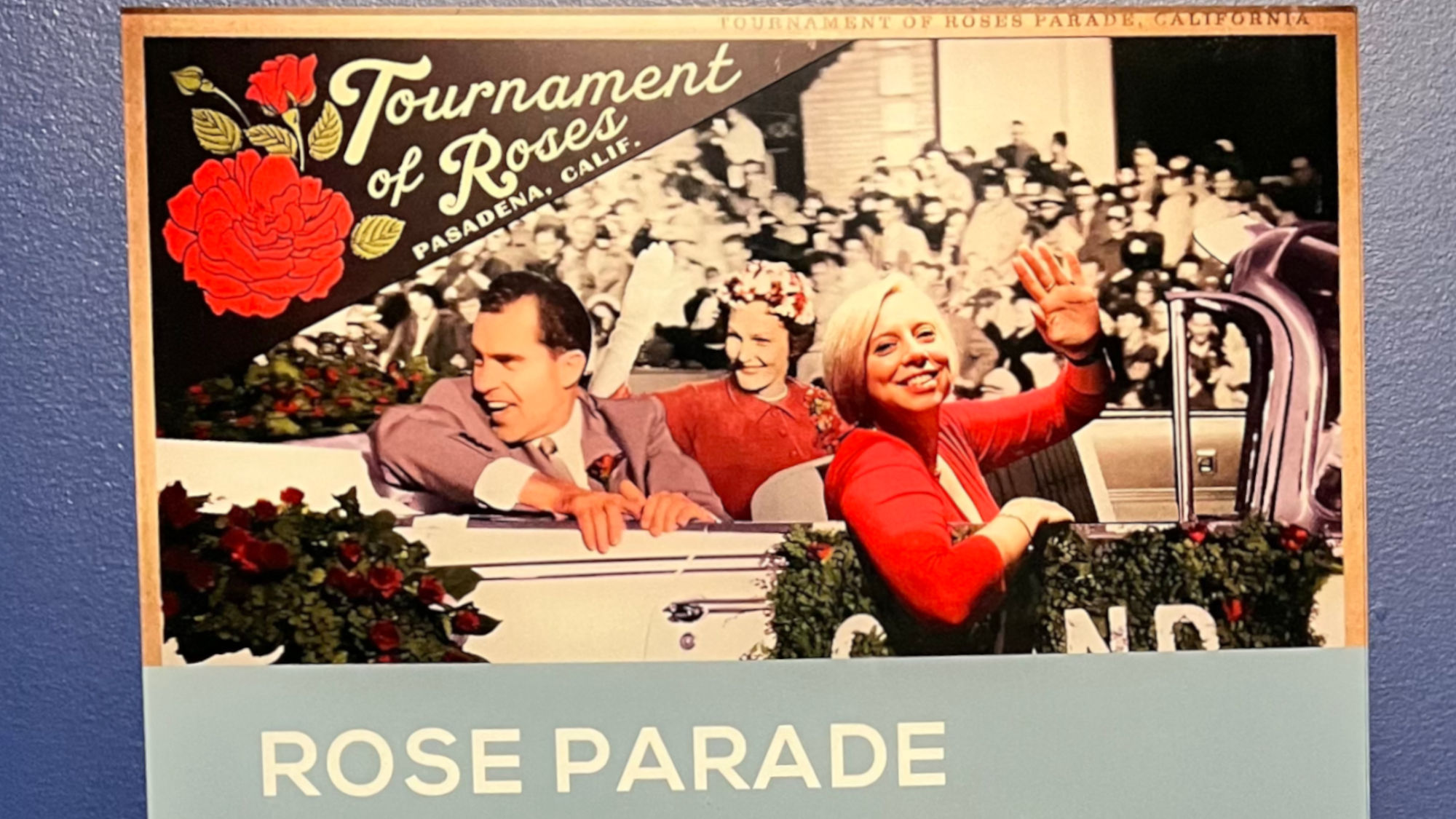
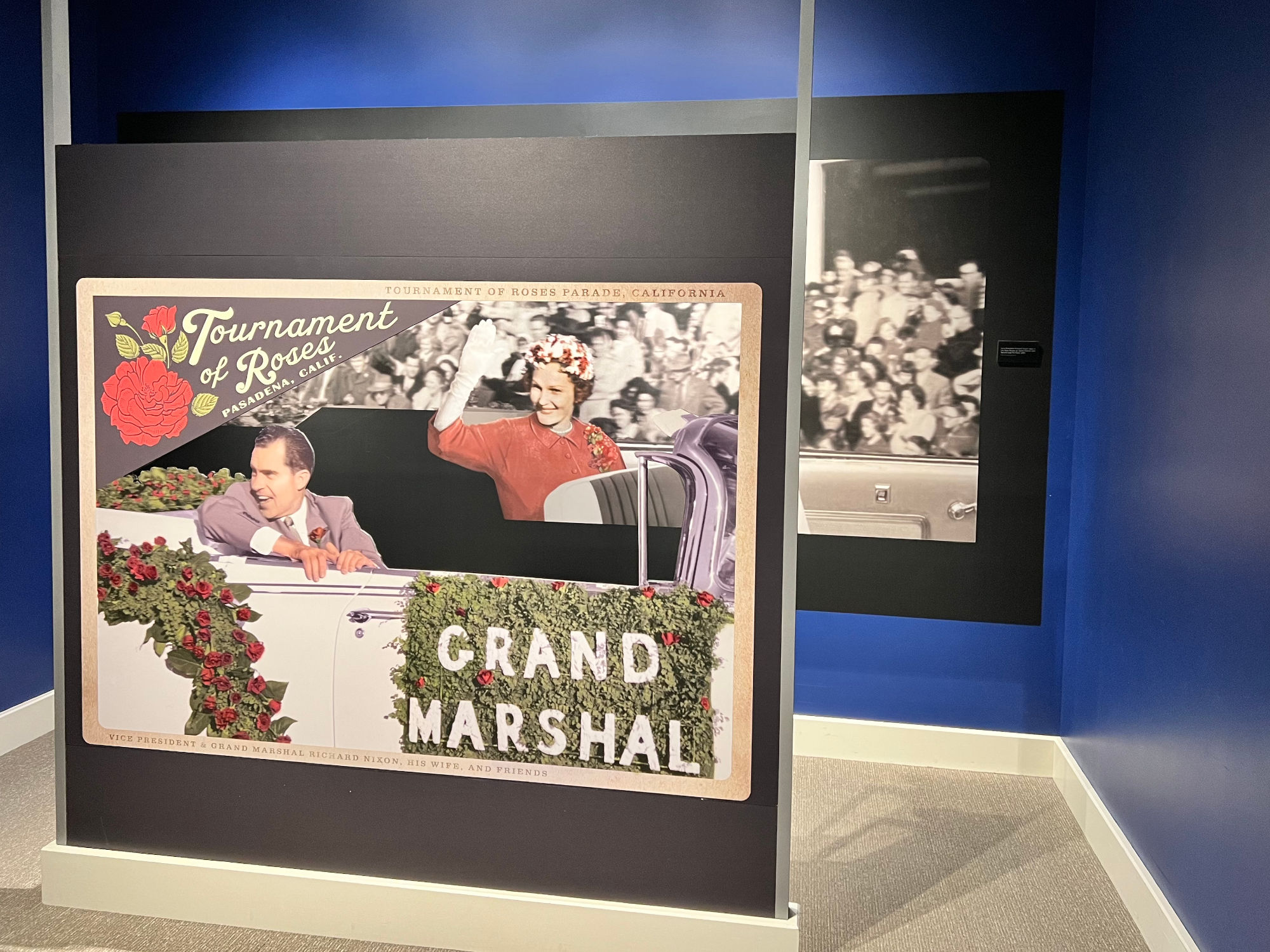

Richard Nixon is inaugurated as Vice President on January 20, 1953
- Outgoing President Harry S. Truman on the left
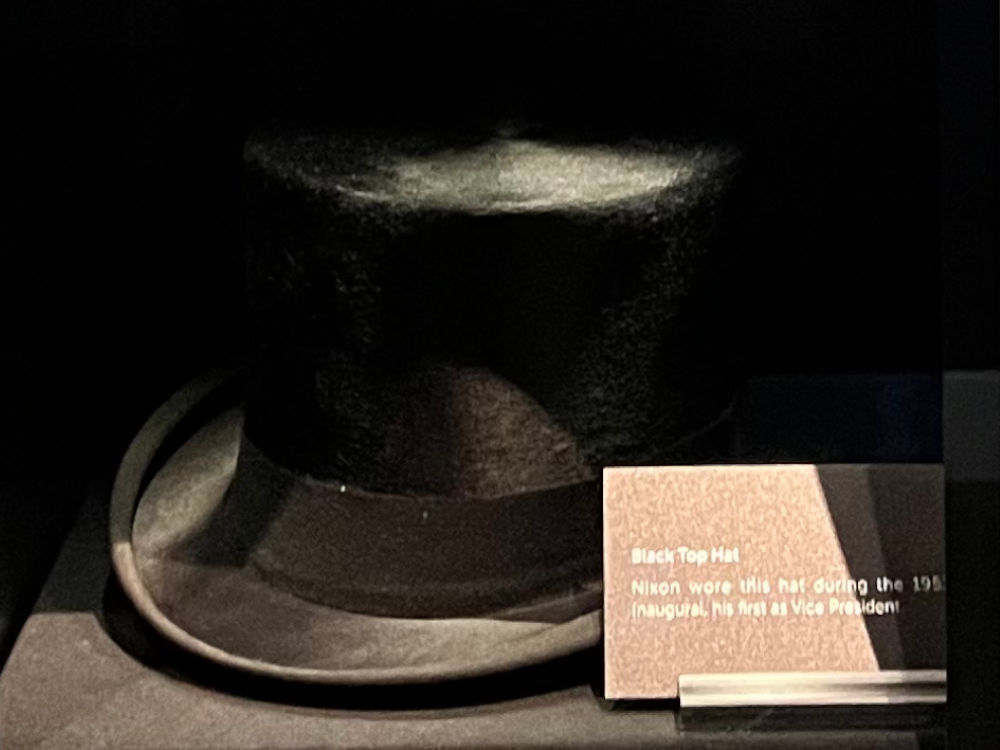
Nixon wore this hat during the 1953 inaugural, his first as Vice President
Vice President Nixon's travel builds vital relationships and foreign policy experience.
- In October 1953, the Vice President and Mrs. Nixon embarked on a tour of the Far East that would take them to 19 countries in just over two months and would provide valuable experlence for the future President. As Vice President Nixon would eventually visit 61 countries and travel 159,232 miles.
During the Far East trip, the Vice President was able to cultivate relationships with key leaders and witness firsthand the ongoing development of the situation in French Indochina (the colonial state that encompassed modern day Vietnam, Laos, and Cambodia).
President Eisenhower's heart attack means that Vice President Nixon is thrust into the lead.
- Eisenhower's heart attack put his Vice President in a delicate situation. Nixon had to provide leadership and send a message of American strength to the world all while not appearing to try to take advantage of the situation.
Hospitalized for six weeks, Eisenhower spent the next few months convalescing while authorizing Nixon to carry on regular NSC and Cabinet meetings in his absence. Nixon made a point of sitting in his usual chair - across the Cabinet table from the President's - while chairing the meetings.
Nixon takes action to aid the victims of communist oppression.
- In 1956 Nixon led an emergency mission to Austria called Operation Mercy. His goal was to draw American attention to the plight of the hundreds of thousands of refugees fleeing the brutal Soviet crackdown on the Hungarian Uprising against communist control.
- After attending official functions, the Vice President insisted on going to the small town of Andau on the Hungarian border, to personally greet the refugees streaming across the bridge there.
Deeply moved by this experience, the Nixons considered adopting a Hungarian orphan, and the Vice President's report urged the Government to take a flexible approach to welcoming these refugees, rather than limiting themselves to a fixed number.
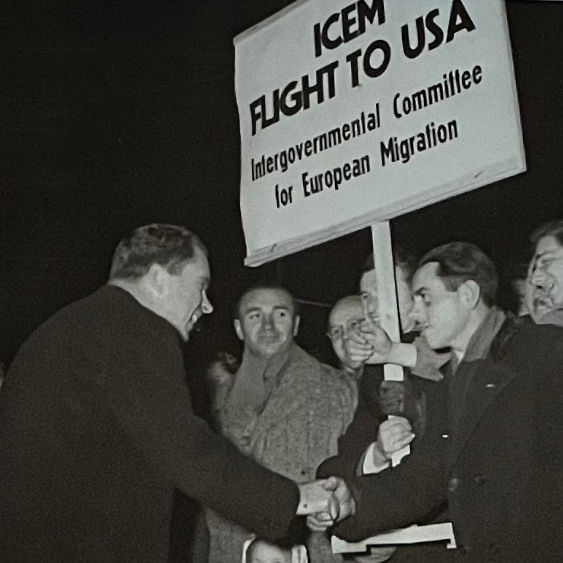
- Nixon shakes hands with a group of refugees who are bound for the United States.
Intergovernmental Committee for European Migration
Nixon plays a pivotal role in passing a landmark civil rights bill.
- After the Supreme Court's 1954 landmark Brown v. Board of Education ruling outlawing school segregation, Nixon was a champion of the newly crafted voting rights bill called the Civil Rights Act of 1957.
He faced stiff resistance in Congress from Southern Democrats who were determined to fight what they viewed as dangerous social policies being imposed on their states by an overreaching Federal Government but was able to mobilize support for a compromise bill.
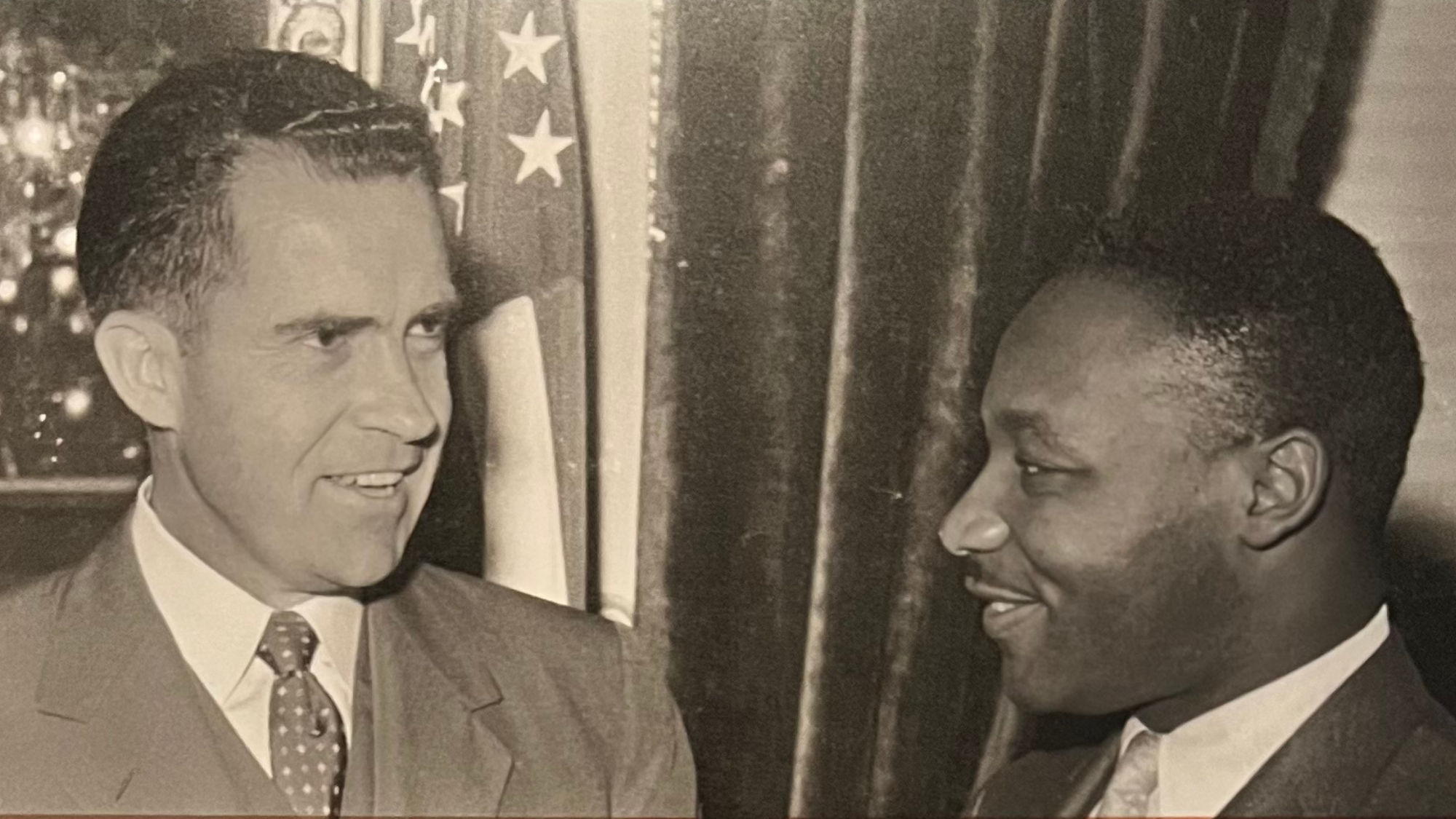
Nixon shakes hands with Dr. Martin Luther King Jr. after meeting to discuss the Civil Rights Act.

August 30, 1957
Mr. Richard Nixon, Vice-President
The United States of America
Washington, D.C.
Dear Mr. Nixon:
For several weeks I have been intending to write you, but an extremely busy schedule has stood in my way. First I want to express my sincere appreciation to you for so graciously receiving me and my colleague Rev. Abernathy in your office during the month of June. I will long remember the rich fellowship which we shared together and the fruitful discussion that we had.
Since our meeting together many significant things have happened in the life of our nation, particularly in the realm of civil rights. Just this morning our local paper revealed that the compromised Civil Rights Bill was finally passed by the Senate. After considering all angles I have come to the conclusion that the present bill is far better than no bill at all. This limited bill still provides district judges with power to maintain order and to insist upon compliance with their orders. This could be a powerful incentive in changes in behaviour and attitude. I realize that many sincere leaders, both Negro and white, feel that no bill is better than the present bill, and that since we have waited this long for civil rights legislation we can afford to wait an additional year to get stronger legislation in this area. While I sympathize with this point of view, I feel that civil rights legislation is urgent now, and the present limited bill will go a long way to insure it. So it is my hope that the President will not veto the bill.
It is also my firm conviction that the full effect of the Civil Rights Bill will depend in large degree upon the program of a sustained mass movement on the part of Negroes. History has demonstrated that inadequate legislation supported by mass action can accomplish more than adequate legislation which remains unenforced for the lack of a determined mass movement. This is why I am initiating in the south a crusade for citizenship in which we will seek to get at least two million Negroes registered in the south for the 1960 elections. With the enthusiasm that we hope to kindle and the aid of the Civil Rights Bill this should not be difficult.
Fundamentally, over and beyond the legal aspects, I believe the issue of integration is a moral one, and is of such transcendent importance that all Americans must face it.
- October 1957
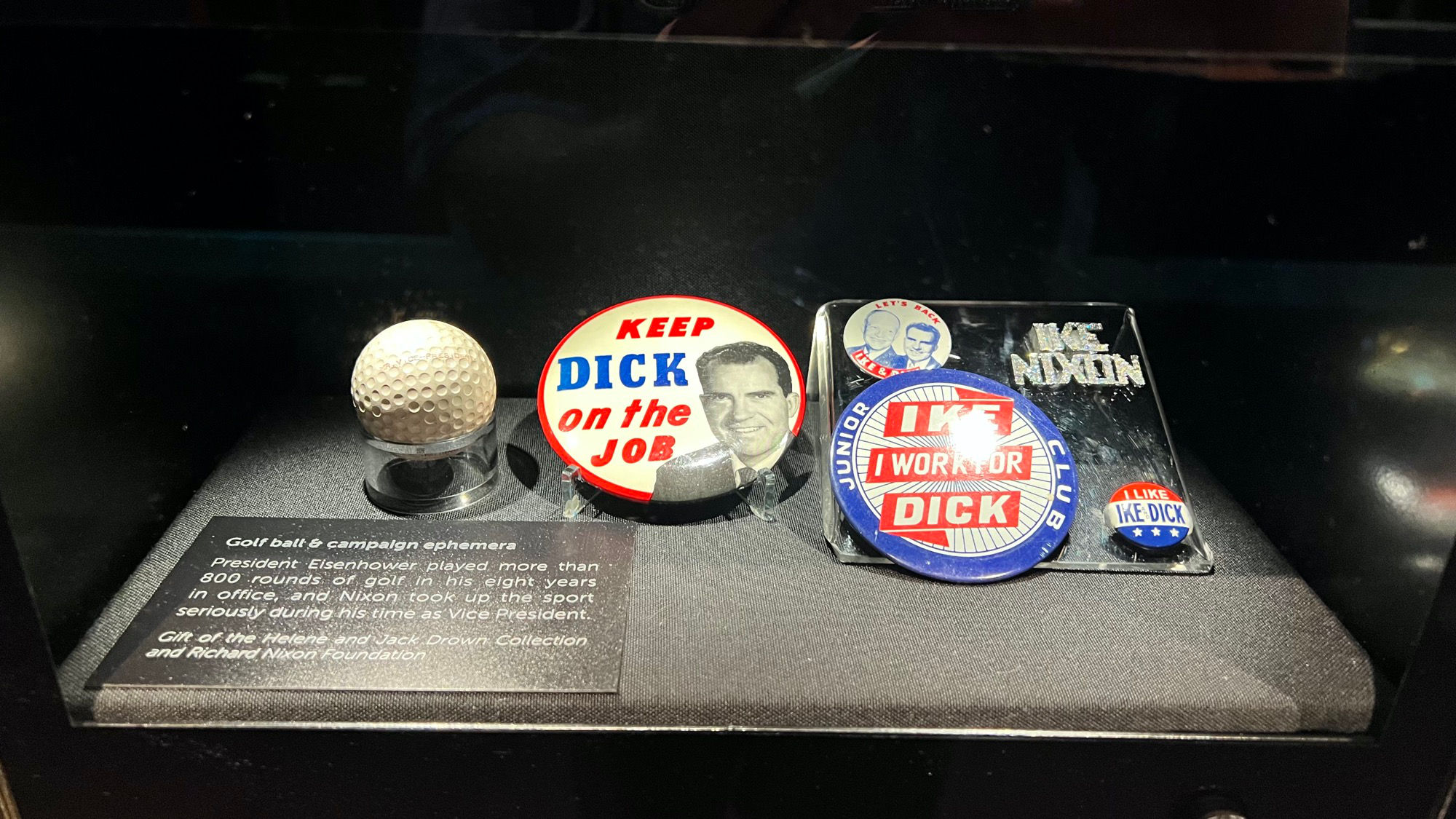
President Eisenhower played more than 800 rounds of golf in his eight years in office, and Nixon took up the sport seriously during his time as Vice President.
Nixon's courage under attack abroad earns high praise at home.
- In April 1958, the Vice President and Mrs. Nixon embarked on a goodwill tour of South America. The trip took a turn when they met with protests organized by local communists.
- Spat on by protestors in Peru and assaulted by a violent mob in Venezuela, the Vice President remained calm.
When the Caracas mob surrounded the Vice President's limousine, broke the windows, and attempted to overturn it, Nixon stopped his Secrat Service agent from drawing his gun - an escallion that could have turned deadly.
Cutting the trip short, the Nixons received a warm welcome at home where they were hailed for their courage.
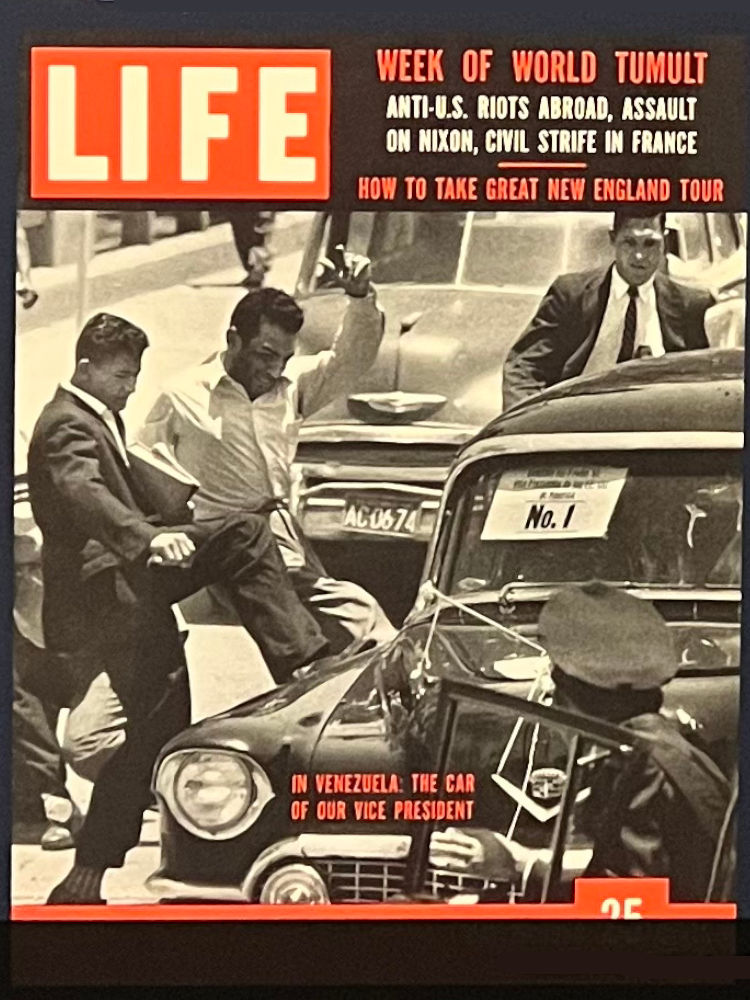
Cover of Life Magazine
You don't think in terms of world politics and hemispheric problems when someone is banging on your window.
- May 1958
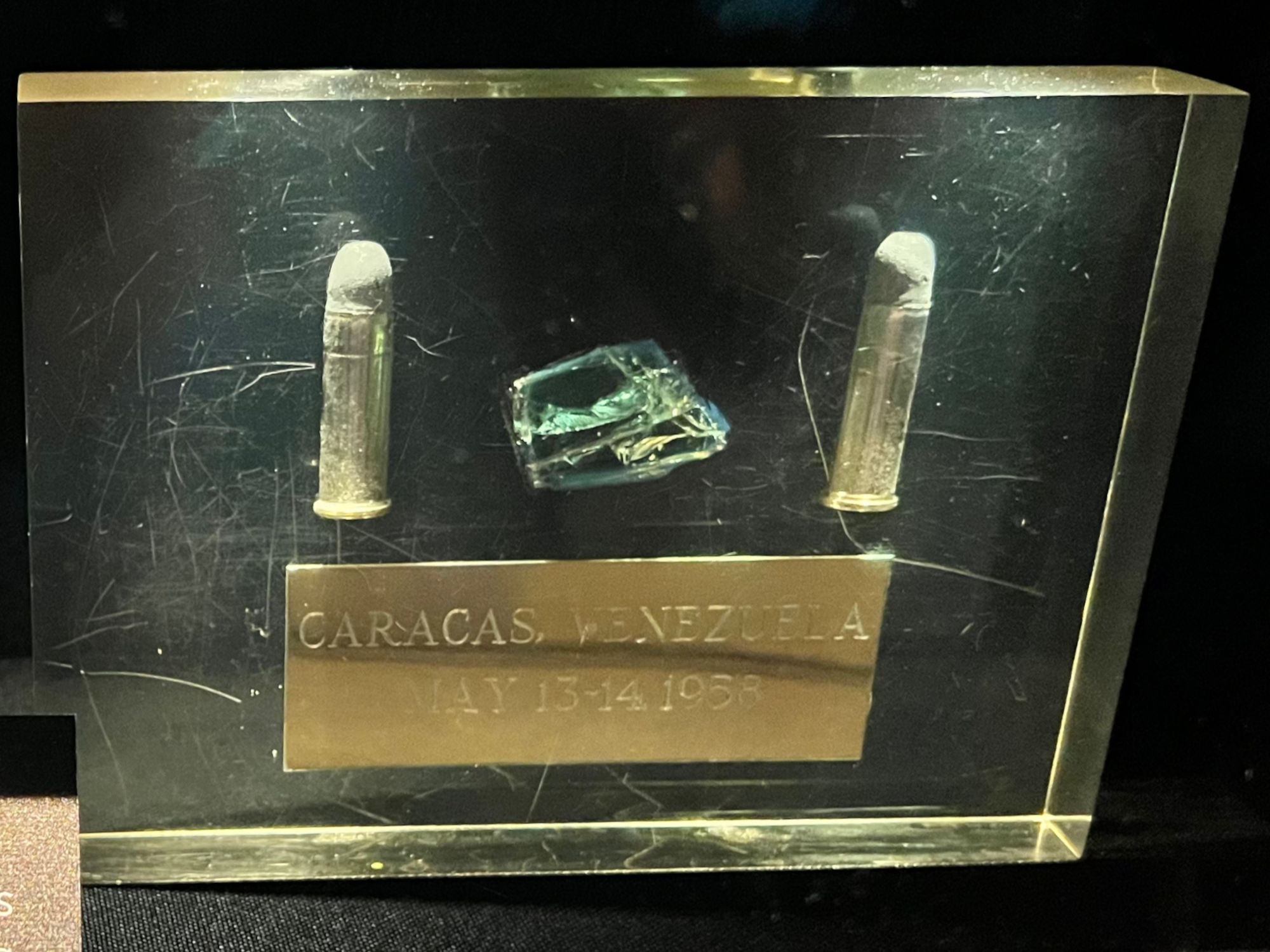
- These bullets and glass fragment are a memento of the violence that broke out during Nixon's 1958 visit to Caracas, Venezuela when his car was attacked and nearly overturned.
Preserved by James D. Hughes, who served as military aide to Vice President Nixon beginning in 1957.
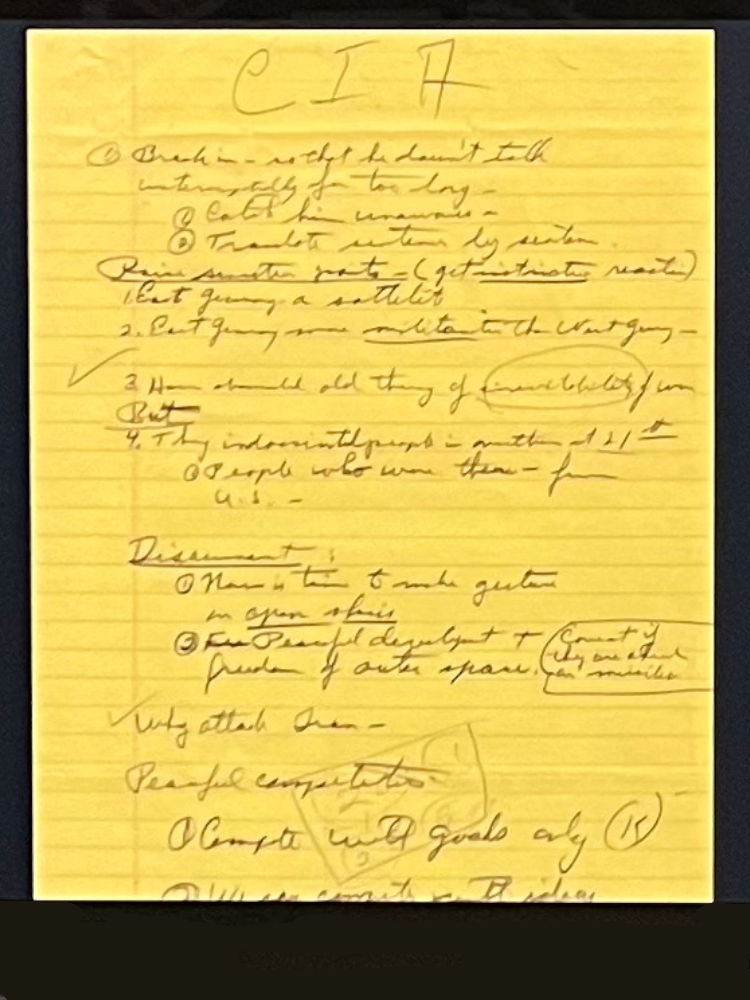
Vice President Nixon's handwritten notes from his CIA briefing before his 1959 trip to Russia
Vice President Nixon scores valuable points against the Soviet Union's volatile leader.
- In the summer of 1959, Vice President Nixon had an impromptu showdown with Soviet Premier Nikita Khrushchev in a model kitchen at the American National Exhibition in Moscow.
The verbal exchange, in which Nixon used greater consumer choice and advanced appliances as evidence to prove U.S. superiority, earned the Vice President the admiration of President Eisenhower and a nation eager for a victory over the Soviet Union. The "Kitchen Debate" became a defining moment in Nixon's political career.
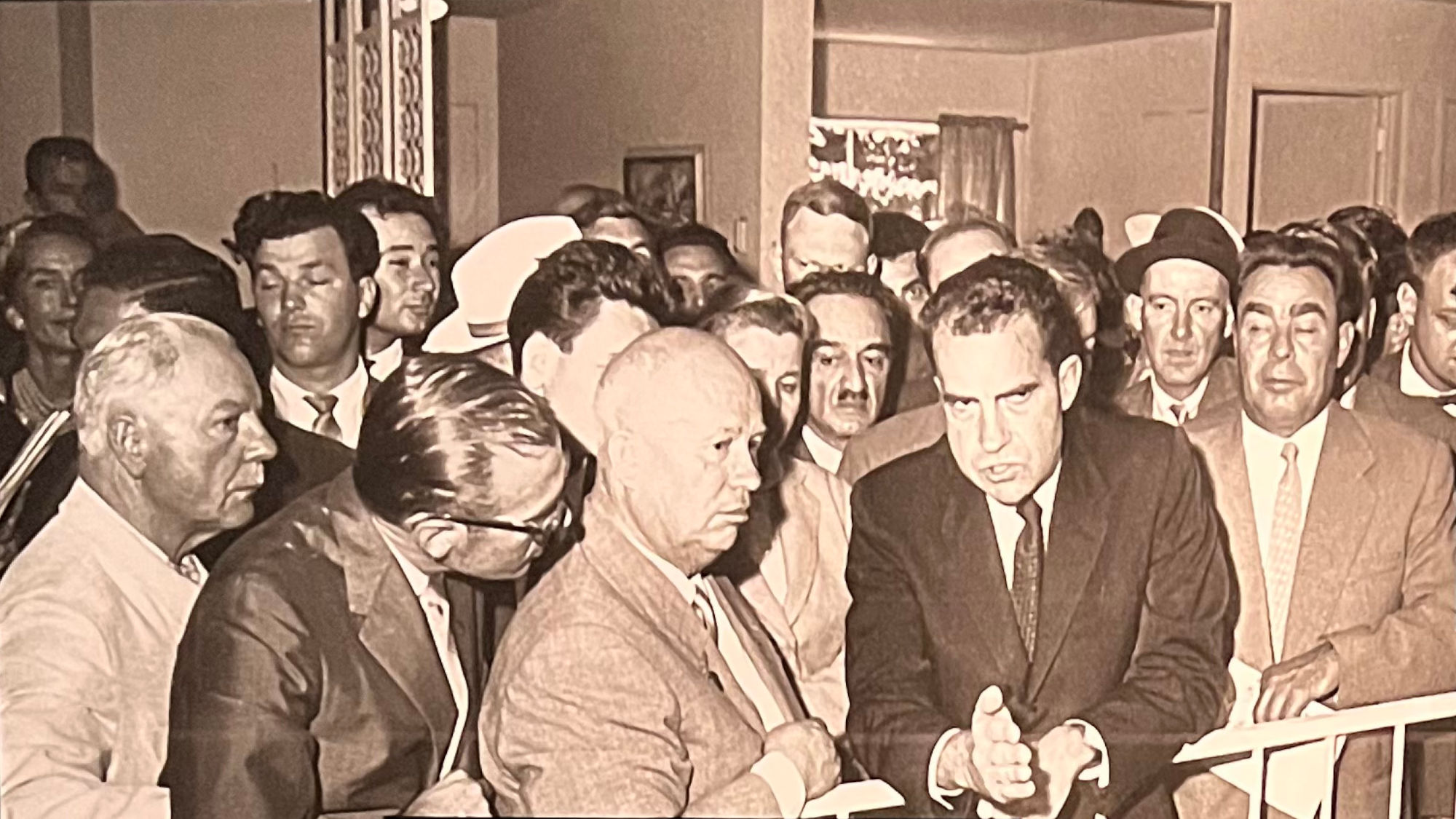
- Looking at a model of a typical American kitchen, Vice President Nixon and Soviet Premier Khrushchev engage in an energetic debate about capitalism and communism.
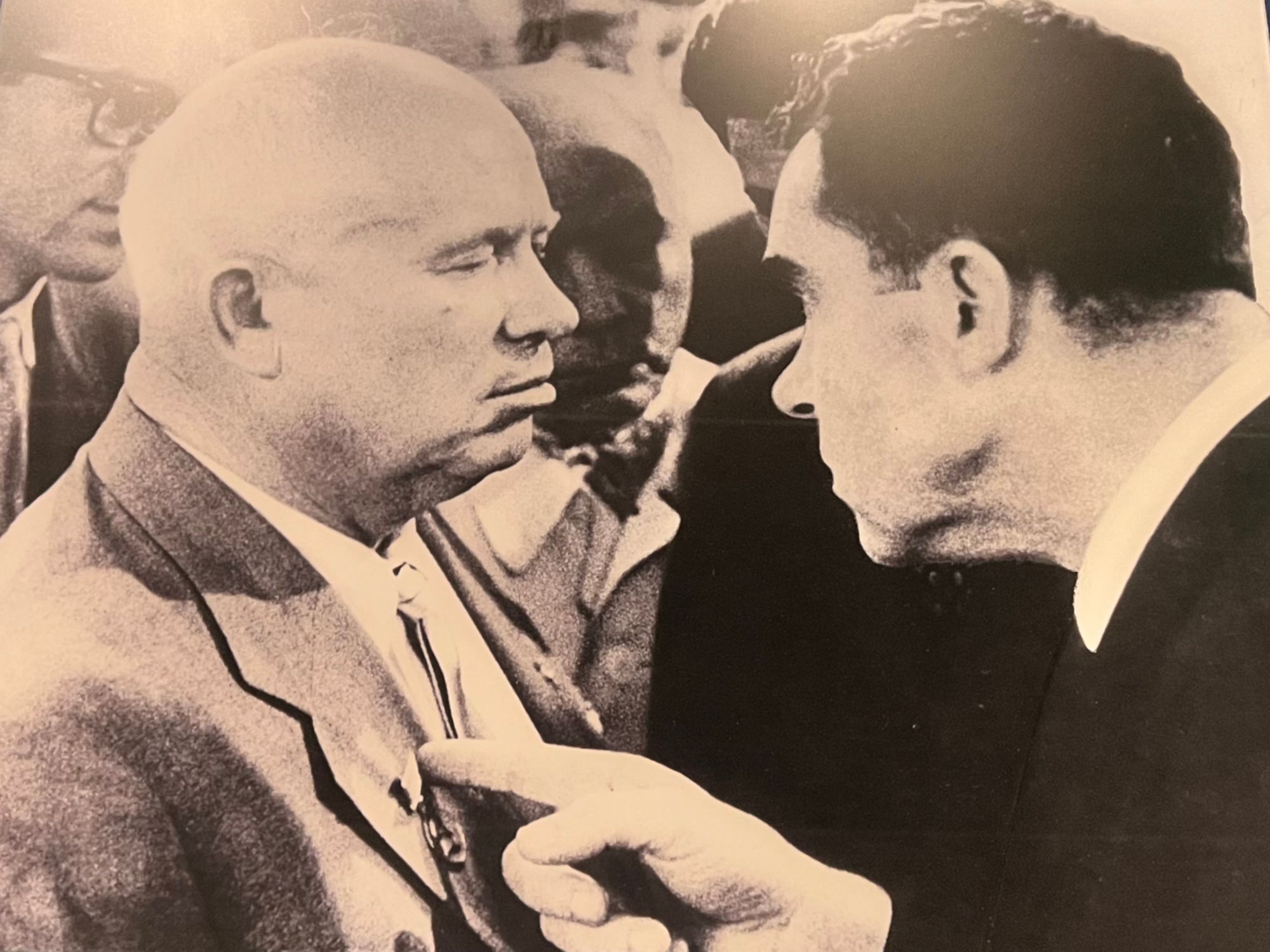
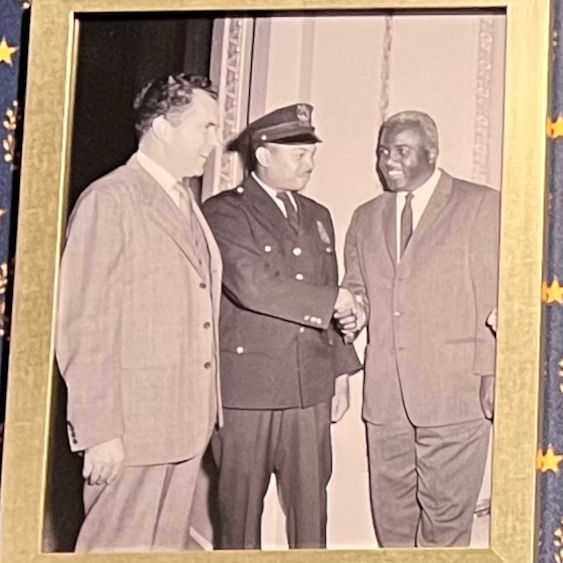
- Vice President Nixon, A U.S. Capitol Policeman, and Jackie Robinson 1960
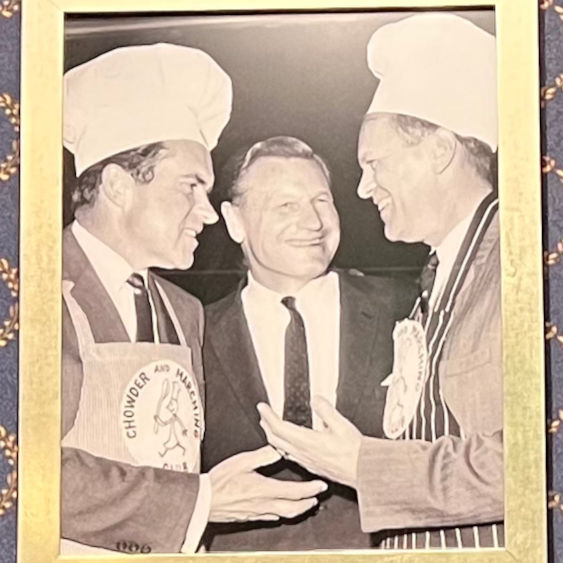
After his Congressional years, Nixon returns to the Chowder & Marching Club with fellow member Congressman Gerald Ford to welcome New York Governor Nelson Rockefeller.
